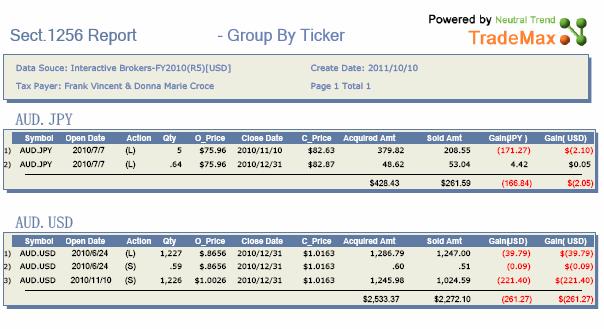Marginal Pdf Calculator

Math 480 Course Notes -- May 28, 1996 Bivariate distributions Recall that at the end of the last lecture we had started to discuss joint probability functions of two (or more) random variables. With two random variables X and Y, we define joint probability functions as follows: For discrete variables, we let p(i,j) be the probability that X=i and Y=j. This give a function p, called the joint probability function of X and Y that is defined on (some subset of) the set of pairs of integers and such that for all i and j and When we find it convenient to do so, we will set p(i,j)=0 for all i and j outside the domain we are considering. For continuous variables, we define the joint probability density function p(x,y) on (some subset of) the plane of pairs of real numbers. We interpret the function as follows: p(x,y)dxdy is (approximately) the probability that X is between x and x+dx and Y is between y and y+dy (with error that goes to zero faster than dx and dy as they both go to zero). Thus, p(x,y) must be a non-negative valued function with the property that As with discrete variables, if our random variables always lie in some subset of the plane, we will define p(x,y) to be 0 for all (x,y) outside that subset. We take one simple example of each kind of random variable.
For the discrete random variable, we consider the roll of a pair of dice. We assume that we can tell the dice apart, so there are thirty-six possible outcomes and each is equally likely. Thus our joint probability function will be and p(i,j)=0 otherwise. For our continuous example, we take the example mentioned at the end of the last lecture: for (x,y) in the triangle with vertices (0,0), (2,0) and (2,2), and p(x,y)=0 otherwise. Tomb Raider 5 Chronicles Download. We checked last time that this is a probability density function (its integral is 1). Marginal distributions Often when confronted with the joint probability of two random variables, we wish to restrict our attention to the value of just one or the other. We can calculate the probability distribution of each variable separately in a straightforward way, if we simply remember how to interpret probability functions.
These separated probability distributions are called the marginal distributions of the respective individual random variables. Given the joint probability function p(i,j) of the discrete variables X and Y, we will show how to calculate the marginal distributions of X and of Y. To calculate, we recall that is the probability that X=i. It is certainly equal to the probability that X=i and Y=0, or X=i and Y=1,. In other words the event X=i is the union of the events X=i and Y=j as j runs over all possible values. Since these events are disjoint, the probability of their union is the sum of the probabilities of the events (namely, the sum of p(i,j)). Thus: Likewise, Make sure you understand the reasoning behind these two formulas!
Weeds Control Without Poisons Pdf Merge. An example of the use of this formula is provided by the roll of two dice discussed above. Each of the 36 possible rolls has probability 1/36 of occurring, so we have probability function p(i,j) as indicated in the following table: The marginal probability distributions are given in the last column and last row of the table. They are the probabilities for the outcomes of the first (resp second) of the dice, and are obtained either by common sense or by adding across the rows (resp down the columns). For continuous random variables, the situation is similar. Given the joint probability density function p(x,y) of a bivariate distribution of the two random variables X and Y (where p(x,y) is positive on the actual sample space subset of the plane, and zero outside it), we wish to calculate the marginal probability density functions of X and Y.
To do this, recall that is (approximately) the probability that X is between x and x+dx. So to calculate this probability, we should sum all the probabilities that both X is in [x,x+dx] and Y is in [y,y+dy] over all possible values of Y. In the limit as dy approaches zero,this becomes an integral: In other words, Similarly, Again, you should make sure you understand the intuition and the reasoning behind these important formulas. We return to our example: for (x,y) in the triangle with vertices (0,0), (2,0) and (2,2), and p(x,y)=0 otherwise, and compute its marginal density functions. The easy one is so we do that one first. Note that for a given value of x between 0 and 2, y ranges from 0 to x inside the triangle: if, and otherwise. This indicates that the values of X are uniformly distributed over the interval from 0 to 2 (this agrees with the intuition that the random points occur with greater density toward the left side of the triangle but there is more area on the right side to balance this out).
To calculate, we begin with the observation that for each value of y between 0 and 2, x ranges from y to 2 inside the triangle: if and otherwise. Note that approaches infinity as y approaches 0 from above, and approaches 0 as y approaches 2. You should check that this function is actually a probability density function on the interval [0,2], i.e., that its integral is 1. Functions of two random variables Frequently, it is necessary to calculate the probability (density) function of a function of two random variables, given the joint probability (density) function. By far, the most common such function is the sum of two random variables, but the idea of the calculation applies in principle to any function of two (or more!) random variables. The principle we will follow for discrete random variables is as follows: to calculate the probability function for F(X,Y), we consider the events for each value of f that can result from evaluating F at points of the sample space of (X,Y). Since there are only countably many points in the sample space, the random variable F that results is discrete.
Then the probability function is This seems like a pretty weak principle, but it is surprisingly useful when combined with a little insight (and cleverness). As an example, we calculate the distribution of the sum of the two dice.
Since the outcome of each of the dice is a number between 1 and 6, the outcome of the sum must be a number between 2 and 12. So for each f between 2 and 12: A table of the probabilities of various sums is as follows: The 'tent-shaped' distribution that results is typical of the sum of (independent) uniformly distributed random variables. For continuous distributions, our principle will be a little more complicated, but more powerful as well. To enunciate it, we recall that to calculate the probability of the event F1 implies that X>1.
Therefore the events and Y>1 are the same, so the fraction we need to compute will have the same numerator and denominator. For we actually need to compute something. But note that Y>1 is a subset of the event X>1 in the triangle, so we get: Two events A and B are called independent if the probability of A given B is the same as the probability of A (with no knowledge of B) and vice versa. The assumption of independence of certain events is essential to many probabilistic arguments.
Independence of two random variables is expressed by the equations: and especially Two random variables X and Y are independent if the probability that a.

• • • In and, the marginal distribution of a of a collection of is the of the variables contained in the subset. It gives the probabilities of various values of the variables in the subset without reference to the values of the other variables. This contrasts with a, which gives the probabilities contingent upon the values of the other variables. Marginal variables are those variables in the subset of variables being retained. These concepts are 'marginal' because they can be found by summing values in a table along rows or columns, and writing the sum in the margins of the table. The distribution of the marginal variables (the marginal distribution) is obtained by marginalizing – that is, focusing on the sums in the margin – over the distribution of the variables being discarded, and the discarded variables are said to have been marginalized out. The context here is that the theoretical studies being undertaken, or the being done, involves a wider set of random variables but that attention is being limited to a reduced number of those variables.
In many applications an analysis may start with a given collection of random variables, then first extend the set by defining new ones (such as the sum of the original random variables) and finally reduce the number by placing interest in the marginal distribution of a subset (such as the sum). Several different analyses may be done, each treating a different subset of variables as the marginal variables. H Red Yellow Green Marginal probability P(H) Not Hit 0.198 0.09 0.14 0.428 Hit 0.002 0.01 0.56 0.572 Total 0.2 0.1 0.7 1 The marginal probability P(H=Hit) is the sum along the H=Hit row of this joint distribution table, as this is the probability of being hit when the lights are red OR yellow OR green. Similarly, the marginal probability that P(H=Not Hit) is the sum of the H=Not Hit row. In this example the probability of a pedestrian being hit if they don't pay attention to the condition of the traffic light is 0.572. Multivariate distributions [ ].
The term “marginal productivity” refers to the extra output gained by adding one unit of labor; all other inputs are held constant. Hodgkin and Non-Hodgkin.